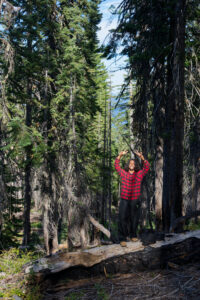by Shaueel Persadee
The Dream Team: LMBS24
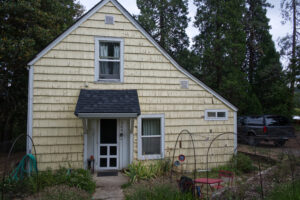

The Plan
Countless hours of research, mapping, and data points were referenced but once boots are on the ground in a location, plans can change quickly based on what is seen and what needs to be collected. Unique plants, rare plants, ones that can survive climate change and ones that are being threatened by climate change were all sought after. In all, we accomplished over 50 collections on this trip, so it was a goal well achieved!
Day 1
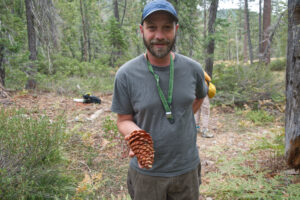

The first meadow and forest we strolled through took us into an area with Pinus jeffreyi (shown above), Gentiana, Triantha, Rosa, and Abies species.
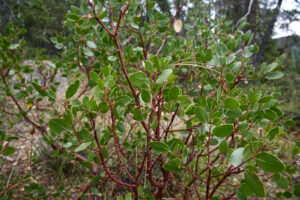

Birds circled ahead in the late afternoon, curious as to what we were doing there outside of the summer camping season. Signs of fire damage were everywhere but so were signs of regrowth, with a host of Carex, Pteridium, and grasses and mosses forming the forest floor; Arctostaphylos (shown below, right) and Vaccinium made up the understory.
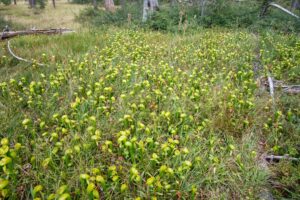

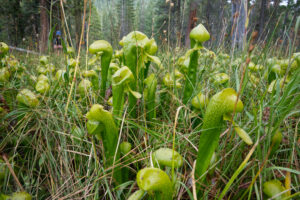

Day 2
Leaving our first AirBnB behind, we set off moments after dawn, searching for a meadow that would lead to mountains and forests. A bald eagle flew over the Suburban as we drove sipping coffee and munching on breakfast snacks. We took it as a sign of good fortune for the trip ahead.
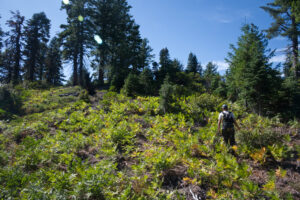

Arriving at our location, we hiked past lakes and through muddy, rocky streams, staying wary of the potential of mountain lions and listening to the chipmunks argue with the jays. We were surrounded by Eriogonum, Gentiana, Lewisia, and Pinus to name a few amidst the other plants that we collected.
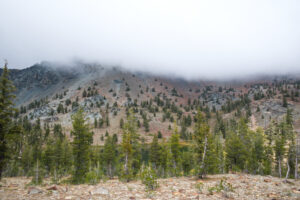

Another “collection trip meal” followed for lunch: apples, beef jerky, and peanut butter sandwiches.
Cercocarpus surrounded us on our descent down the mountain and so did Ceanothus & Frangula, adding more diversity to our already saturated plant palette. The night was filled with seed cleaning, sorting and identification which is crucial to the collection effort. How are you supposed to know what you have if you cannot identify it?
Day 3
The mornings got colder, and soup and oatmeal became staples for those brisk mountain days where the cabin does not feel insulated enough. Winding roads and altitude changes during driving will do a number on your body and mind, and the world feels like it’s spinning a little too fast long after you step out of the vehicle.
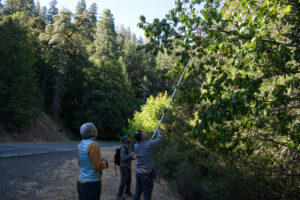

Pinus sabiniana cones dropped into the road in front of us-much better than dropping on top of you- offering a nice moment to stop and collect while the squirrels and deer crossed the road up ahead. Quercus & Arctostaphylos covered the slopes around and soon we continued, excited to collect the next plant around the next corner.
But then, the gate. The first one. Then the second. Followed by a third. The fire danger, structural instability, and smoke hazards surrounded us on all sides, holding us hostage. We stopped and ate lunch, which made us feel better. Right after eating atop a pile of rocks, we found two more plants that we were looking for.
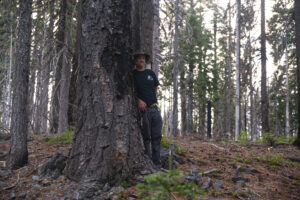

Lupinus, Ceanothus, and Penstemon made up the evening. The find of the day: a field of dwarf chinquapins underneath firs– not common by any means. What a great find!
Feelings of Hope
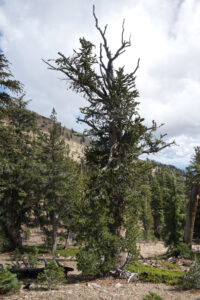

The trip kept delivering a sense of wonder, knowing that these plants can survive wildfire to grow in sand and gravel. Even more wondrous was a floating bog we found surrounded by conifers on a slope. Silent except for bird calls in the distance and frogs croaking in the summer evening.
As we descended to our BnB for more seed cleaning and data entry, quail and grouse crossed our paths, probably spreading seeds on their own as they ate what they could reach in the scrub.
Day 4
The next chilly morning found us scrambling up a road that was entirely covered in sand and gravel to collect Notholithocarpus; all while trying not to slide down the thousand-foot drop off the cliff into a valley of pines with pointy leaders that looked way too ready for Halloween.
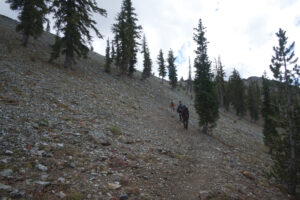

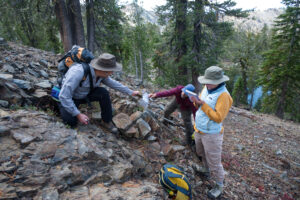

After a hearty lunch of burgers (and a salad for Martin), we thought we were going to be thwarted by yet another gate. We took a different route that led to Cephalanthus growing in what used to be a lake bed– growing so prolifically that it formed its own little colony of plants. Great detour, and mostly because somebody on the trip wanted to go swim in a lake.
Who wouldn’t on a 92 F degree day? It was totally worth it.
The day ended with good drinks, more seed cleaning, great food, and “Go to bed when you’re ready, otherwise we’ll all sit here losing our minds over these seeds.”
Day 5
Leaving California was bittersweet, but everyone was starting to feel the effects of multiple days of driving, hiking, hunching over to clean seed, and eating half our weight in snacks.
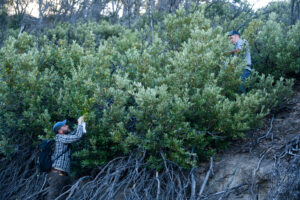

Yet, there’s always time for one more collection. And so we collected, finding an oddity in the oak family that we are working to identify.
Meadows of ferns, wild berries, and manzanitas wished us goodbye, along with streams, pine forests, and some of the most fascinating geologic formations ever seen by human eyes.
We drove along Interstate 5 in the shadow of the mountains and then in the sunny blast of California and Oregon on solstice day. Botanizing along the way and planning the future ahead.
Reflecting
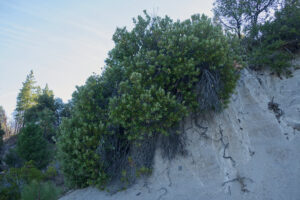

Our collection trip results will fuel research and plantings that will save and promote unique plants, rare plants, ones that can survive climate change, and ones that are being threatened by climate change. A small step to safeguard the future of the natural world in the Pacific Northwest.
About the Author
